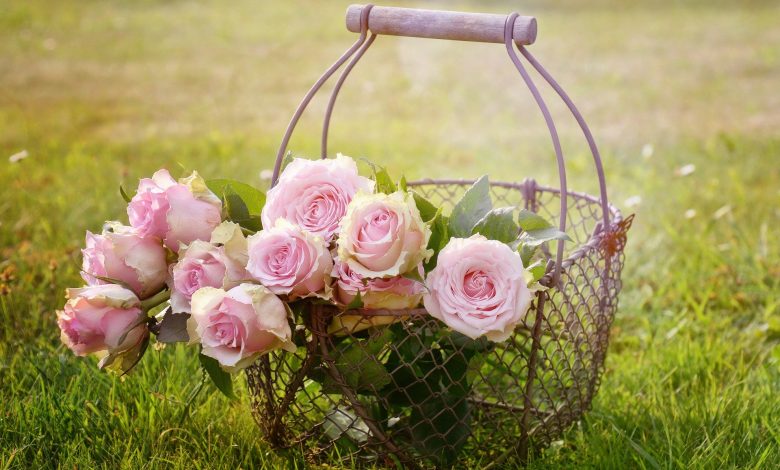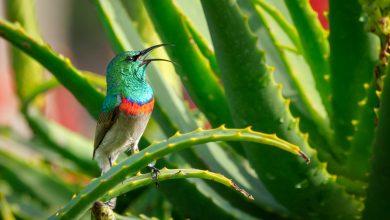Best Plants for Your Heirloom Garden

Are you looking for a way to boost the look of your garden? Perhaps you want to try something new? Sometimes what was once old becomes new again, and this brings us to the subject at hand: heirloom gardens.
What is an heirloom garden? There is a bit of debate about the “real” definition of heirloom in the world of gardening, but we will try to keep it simple. Essentially, for a plant to be an “heirloom,” it must be from an old cultivar, or a plant created through selective breeding. Heirloom plants are open-pollinated plants, which pass their traits on year after year and season after season.
Many gardeners love heirloom flowers because it reminds them of days gone by and brings back some cherished childhood memories. Plants like trumpet vines and snapdragons are common, and many people simply like the subtle scents of these flowers, which remind them of a simpler time.
Are you ready to jump in and see what type of plants work well when creating an heirloom garden? Keep reading to find out:

Roses
If you don’t have a few rose bushes in your heirloom garden, you are certainly missing out. The rose has been grown for more than 4,000 years, and we can look all the way back to the 1860s to find what is considered to be the first hybrid rose: La France.
Just keep in mind that not all roses are considered heirloom flowers. Specifically, you want to look at Damask, Gallica, or Bourbon roses. These roses were all in existence before La France came to be, and any other rose types that were in existence before that time, including Tea, Alba, and Moss, are also considered to be heirloom roses.
Heirloom roses originally came from the Mediterranean and Europe, and unfortunately, they only bloom one time each year. However, they are certainly an amazing addition to your garden thanks to their exceptional beauty and scent. They are also very hardy, and you don’t have to worry about disease, as most are immune from common garden diseases.
You can find heirloom roses at some local greenhouses, but in general, most people find them by shopping online.
If you are going to plant heirloom roses, you should do so in the spring to early fall. Make sure that they are in the ground at least six weeks before the first frost if you plant later in the year. Roses do go dormant in the winter, so it is important that you give them time to get roots before this happens.
It is also important to make sure the pH of the soil is correct when you plant heirloom roses. You want to make sure it’s around 6.5 before planting. These roses also need a big hole to go into, so dig one that is about two by two feet in diameter. This gives the roots room to grow and spread. Mix in a good quality rose soil, and if you are using the soil naturally in your area, consider adding manure or bone meal for best results.
Until the rose is established, you should water them two to three times a week and then once a week, unless overly warm. During the first season, fertilize with liquid fertilizer, and you can use a granular fertilizer the second year.
If you do this right, there is no reason that you won’t have gorgeous heirloom roses for years to come.

Hollyhocks
Another common flower to add to an heirloom garden is the hollyhock. You can buy heirloom hollyhock seeds or plants online or from local garden centers. The hollyhock is a perennial in Zones 3 – 8, and they can live for many years if they are taken care of each season. They grow tall and work well when paired with short plants. They are also easy to grow and are not too picky about their environment.
When planting hollyhocks, you don’t have to worry too much about the soil pH, though these beauties prefer a range from 6.0 to 8.0. You should plant them in the spring or the fall, and you should choose a location that gets a lot of sun yet is safe from big gusts of wind. Most seedlings are grown in a special soil mixture, which promotes quick growth, so it’s best that you have the soil ready to go before your plants arrive.
It is best to plant hollyhock plants about 18 inches apart. Remember, these plants are tall and large, so you need to have a lot of room for them to grow. If you notice that some of the stems are fragile or you anticipate wind, you should stake them.
The hollyhock is okay in moist soil conditions, as long as it drains well, and it is best to water at the base, not at the leaves, as disease can form.
To make sure your hollyhocks last for years to come, you must remove any seed heads that form. When the flowers fast, you should cut the stalks at the base. Once your hollyhocks are established, they should keep coming back year after year with proper care and can even be transplanted to other areas of your garden.

Black-Eyed Susan
Who doesn’t love the sunny and beautiful black eyed-susan? This flower is perfectly at home in an heirloom garden, and like many other flowers, they are quite easy to grow and care for. Most people recognize the black-eyed susan thanks to its bright yellow petals, but there are other heirloom varieties, too, including the Cherry Brandy, which is a gorgeous red, and the Chocolate Orange, which is a stunning brown and orange hybrid.
This is a beautiful flower to add to your heirloom garden to bring a rustic look, and this wildflower can greatly brighten up your yard. These plants can grow in many types of soil, but they like a neutral pH and sunny conditions. The care of these plants is easy, and they come back year after year with just a bit of deadheading.
Another great benefit of adding black-eyed susans to your garden is that they attract bees, butterflies and other pollinators. However, they also attract deer and rabbits, which like to eat it. So it is recommended that you also plant rosemary or lavender near the black-eyed susans, as these are known to repel damaging wildlife.
You can grow the black-eyed susan from a seed or a cutting, though cuttings are easier. You should start the planting process when the soil is a steady 60 degrees Fahrenheit. You should grow the seeds indoors before planting, and when the roots are strong, you can transplant them outdoors.
Make sure to plant the flowers in full sun and in well-drained soil. Water them moderately and deadhead them when necessary.

Cleome
The cleome, or the spider flower, is a common heirloom plant, which is often used as a border or as part of a flower wall. These annuals are easy to care for, and though the seedlings don’t look especially exciting, when they bloom, you can easily see why they are a favorite of many gardeners.
The cleome grows to a height of three to four feet and tends to be planted behind similar, shorter plants. The flowers come in a number of colors, including white, pink, purple, and lavender, which complement many different garden designs. They also attract pollinators, including bees, butterflies, and hummingbirds. Though these flowers don’t have a strong scent, they look beautiful.
It is easy to start the cleome plant from a seed, and they grow very easily without much care. These plants also self-seed, so you should make sure that you keep them under control unless you want your entire flowerbed to be overrun with cleomes. It takes less than two weeks for the seeds to germinate, and you can even sow them in the fall and have flowers growing in the spring when conditions are right.
For these flowers to grow to their full capacity, they need about 18 inches of space, and they must get full sun. The cleome plant does very well in most garden soils, and it generally takes care of itself once it is started. They are tolerant to drought, and if you add mulch, you can even decrease the amount of water these plants need, which make them good for areas with little rain. The only thing you need to worry about is that these plants are not tolerant of frost, so when the weather turns cold, you must say goodbye to your cleomes.

Sweet Pea
Sweet peas are a fabulous addition to any heirloom garden, and many people have fond memories of these plants, as they remember them from grandma’s house. With a sweet, flowery aroma, the sweet pea comes in a variety of colors, and they are often cut and placed in vases to bring their beauty and scent indoors.
You will find that sweet peas come in two different types: climbing and bush. Both of these types are vine flowers, but the climbing variety of sweet pea requires a trellis or other support. You should have this trellis in place before you plant the flowers, as you don’t want to damage the roots by installing it later. You also want to avoid planting your sweet peas near a wall, as they need a lot of circulation.
It is best to plant sweet peas in the spring, even if there is still a chance of light frost. You should also allow them to begin to germinate before planting by soaking them in water for about 24 hours. This helps the seed begin to grow, as the coat of the seed is pretty tough. Alternatively, you can create a nick in the seed before planting.
Sweet peas grow best when planted in sunny areas or those with light shade. If you plant from seeds, you should see them sprout within two weeks.
When the plants are about six inches tall, you should pinch out the tips, which helps to stimulate further growth. You also should place some mulch around the sweet peas at this point. To keep your plants flowering as long as possible, you should pick off any flowers that are losing their luster. This helps to encourage the plant to produce new blooms.
There is one word of warning to keep in mind about the sweet pea: the seeds actually do resemble edible peas, but if they are eaten, they can be toxic. So watch out for any children who might be around these plants.

Sunflowers
Sunflowers are another very common addition to any heirloom garden, especially the giant sunflowers, which are only one of the more than 70 varieties of sunflowers out there. These plants can grow taller than 12 feet, so you need to make sure you have plenty of room if you want to grow them on your property.
With so many sunflower options, you need to make sure you are planting one that matches your needs and the environment. For example, if you are planting these for looks only, you have a lot of choices. But if you are planting them for their delicious seeds, you want a variety that will produce a lot of them. Furthermore, if you don’t have a ton of room, you will want to choose a smaller variety than the ones that can grow up to 14 feet tall.
It should be no surprise that sunflowers require a lot of sun, and they do best in areas that are hot and sunny. They thrive when they get six to eight hours a day, and the warmer and sunnier it is, the better they will grow.
These flowers are drought tolerant, but they grow best in soil that is well-drained. The soil should be loose, as the roots must grow deep to support the tall flowers. If you live in a windy area, it is best to grow them against a south-facing wall, as they will get the support they need.
If you are planting sunflowers outside, you should plant them about two weeks before the last frost, generally in late April or early May. They can handle some cold temperatures, but you don’t want them to freeze.
Plant the seeds one to two inches deep, and you should plant them at least six inches apart from each other for the smaller varieties and about a foot apart for the larger ones. To make sure they grow, you can certainly plant more than one seed in an area, and then thin the blooms when necessary. It’s important to water the newly planted sunflower seeds thoroughly, but you don’t want to over water. If all goes well, you should see sprouts by the tenth day after planting.
If you want a little variety, you can plant a few different varieties of sunflower. Just make sure to put the tallest ones in the back and the smaller ones in front. You can also stagger the planting time so that you have sunflowers blooming throughout the summer.
Though sunflowers are very easy to care for, the first couple of weeks before the plant becomes established are important. For instance, you should make sure to water them frequently, and don’t just water the stem. Instead, you need to water around it so that the entire root zone is covered. You should also water the seedings daily, making sure to keep the soil moist but not over watered. Once the plants are established, you can cut down watering to once a week.
You don’t have to worry about fertilizing your sunflowers unless your soil isn’t great. If this is the case, you can use compost or a slow-release fertilizer. Just don’t add fertilizer if you don’t need it, as you can introduce too much nitrogen, which can cause the flowers to not fully bloom.
Though sunflowers are gorgeous and easy to care for, they attract a lot of pests including birds, snails, slugs, and squirrels. Deer are also attracted to them. You can cover the plants with garden fleece to keep many pests off, but if you have deer in your yard, you will need to build a fence.
As the sunflowers grow taller, you might have to support them. If you see them drooping, you can support them by tying them up or staking them. This should also be done if you are in a windy location.
Finally, the best thing about growing sunflowers is the seeds. They are extremely nutritional, and you can harvest them right from your yard. Some of the best options for sunflower varieties that produce a lot of seeds include Titan, Mammoth Russian, Kong Hybrid, Mammoth Grey, and Sunzilla.

Creating a garden is a hobby for many, and creating an heirloom garden is a task that can take gardening just a small step further. Heirloom plants bring a sense of charm to any garden, and the plants that you choose are sure to bring many amazing memories of days past and can create new memories for a new generation for years to come.



